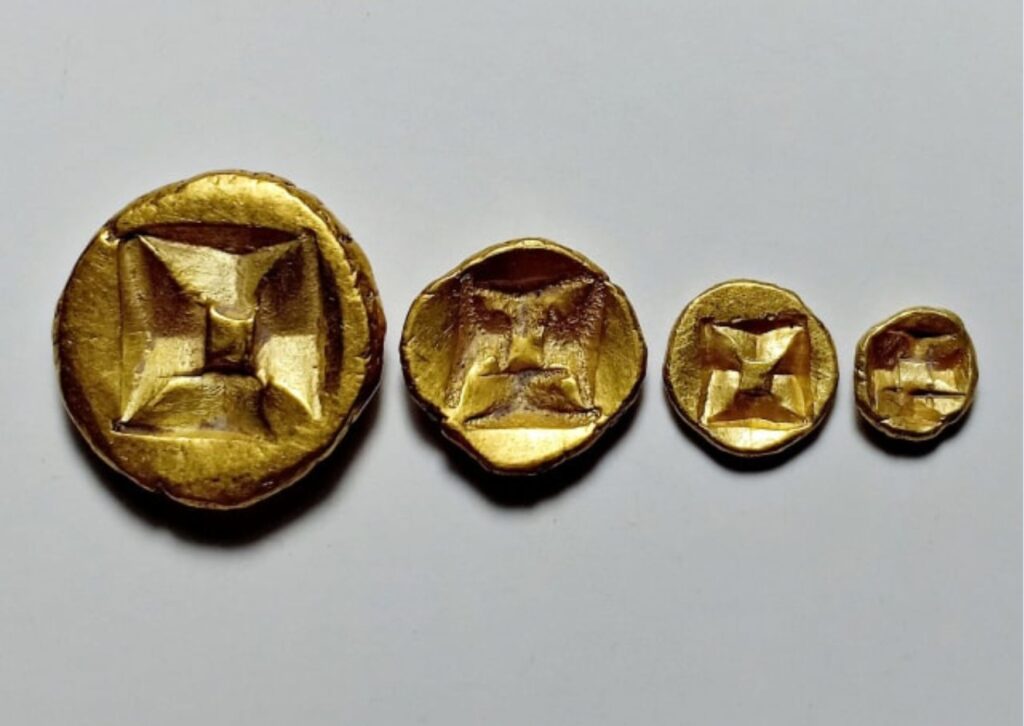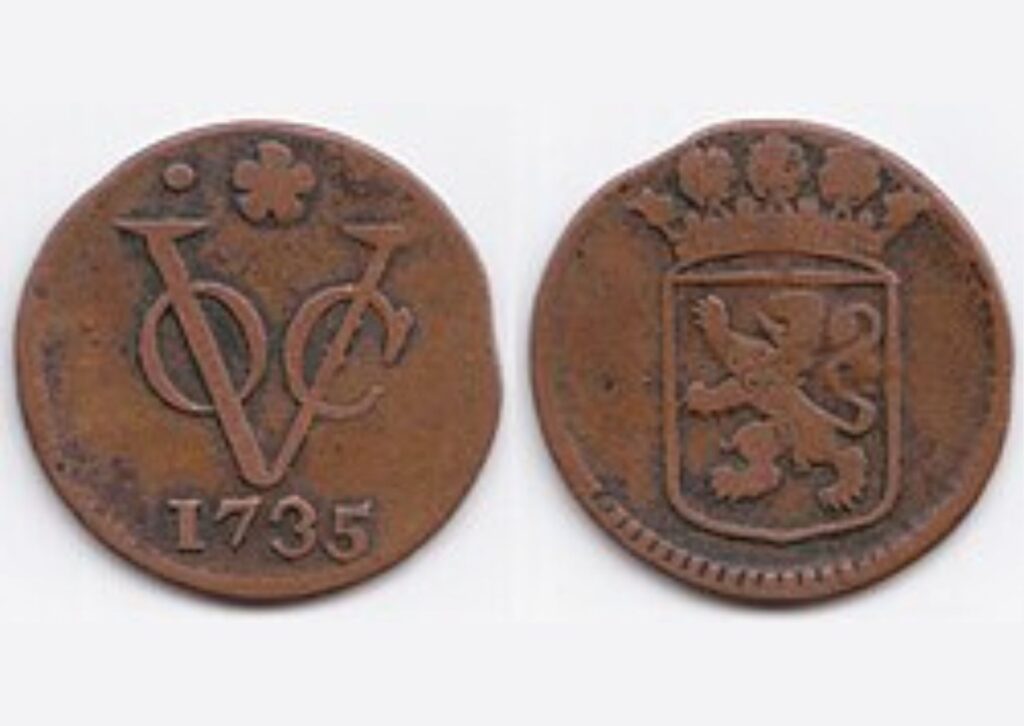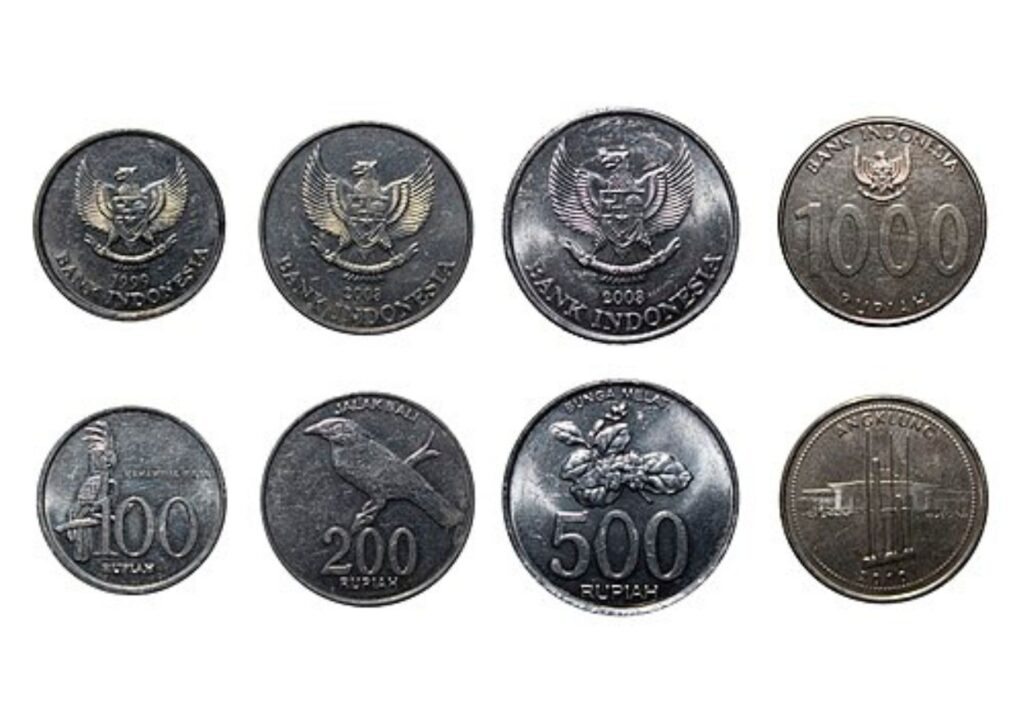Uncategorized
From Barter to Rupiah: The Evolution of Coinage in Indonesia
Before the use of currency, transactions were conducted through barter. In a barter system, there was no standardization of value, so the worth of goods exchanged depended on mutual agreement. This lack of standardized value was one of the major weaknesses of the barter system. Eventually, humans developed monetary systems to facilitate transactions with more definite exchange values. Coins were introduced by foreign traders when they arrived in the Nusantara to trade. Afterward, local kingdoms began minting their own coins to simplify transactions, benefitting from the standardized values accepted in international markets. This adaptation made tax collection and administrative matters more efficient and organized.
Coins were first introduced by Indian traders in the 1st century CE. Alongside their arrival, coins began to be used for transactions in the Nusantara. Indian traders brought goods such as spices, textiles, and jewelry for trade. Although India still practiced barter, their civilization had already adopted coinage, using metal coins as a means of payment. Evidence of this can be seen in the discovery of punch-marked coins in Indonesia, the oldest Indian coins, dating back to the 6th century BCE, during the Mahajanapada era.
Coins from the Gupta, Chola, Satavahana, Kushan, and Pallava dynasties were also found at archaeological sites in Indonesia. Indian coins typically featured the image of a ruler on one side and Hindu-Buddhist symbols on the other. Some coins displayed royal insignia, such as those from the Pallava Dynasty. The design of these Indian coins influenced the style of coins later minted by local kingdoms in the Nusantara. The arrival of the Chola Kingdom in the 9th and 10th centuries coincided with the peak of the Sriwijaya Empire, which dominated the maritime trade routes of Southeast Asia. Chola coins circulated in the archipelago between the 11th and 13th centuries and inspired Sriwijaya to produce its own coins.

Chinese traders arrived in the archipelago between the 1st and 4th centuries CE. The relationship between China and the region flourished between the 7th and 10th centuries. During the Han Dynasty (206 BCE – 220 CE), developments in navigation and shipbuilding encouraged Chinese traders to embark on maritime expeditions. They brought goods such as porcelain, silk, and metal. The discovery of Han Dynasty coins in Indonesian archaeological sites provides evidence of early trade contact
Chinese dynasties such as Tang, Song, Ming, and Yuan also established diplomatic relations with local kingdoms. These relations included currency exchanges, with Chinese coins either brought by traders or given as tribute and diplomatic gifts. Chinese coins found in the Nusantara were made of copper, bronze, or other metals and are especially common in Sumatra (former Sriwijaya territory) and the Malay Peninsula. Beyond being used as currency, Chinese coins became symbols of prosperity, integrated into local traditions, burials, and rituals—serving not only economic but also cultural functions.

As the Nusantara grew into a center of international trade, a more practical exchange system became necessary. The barter system had limitations in determining fair value. Local kingdoms began minting coins that were more easily accepted in global markets, aligning with international monetary standards. Since Indian and Chinese coins were already widely recognized, their designs were adopted by local kingdoms. Chinese kepeng coins, for example, influenced Sriwijaya’s coinage, which imitated their round shape with a square hole in the center, ideal for stringing the coins together. Sriwijaya coins even featured Chinese characters, although these were often poorly rendered due to local production methods.
In terms of materials, coins across the archipelago varied depending on local metal availability. The Sultanate of Samudra Pasai in Aceh minted gold dinars with 70% purity, capitalizing on Aceh’s abundant gold. In contrast, Sriwijaya used tin, which was more readily available. Coins served not only as currency but also as symbols of power and cultural identity, often bearing names, titles, or royal insignia to assert legitimacy. They also helped spread religion—during the Islamic era, many coins featured Arabic calligraphy and Islamic phrases.
The Sriwijaya Empire, one of Southeast Asia’s largest maritime powers, was founded in the 7th century and reached its peak in the 13th. Its strategic location made it a hub for international trade and a frequent stop for foreign merchants. Through these trade contacts, Sriwijaya was introduced to coinage. While local trade still relied on barter, coins were primarily used for international transactions. Sriwijaya maintained diplomatic relations with foreign powers, often sending envoys and gifts to China and India. Archaeological findings confirm the presence of Chinese and Indian coins in former Sriwijaya territories.
Sriwijaya’s currency, commonly known as uang timah (tin money), came in various shapes, such as round, oval, or animal-shaped, reflecting local cultural influences. These coins replaced the barter system and demonstrated Sriwijaya’s transition to a more advanced monetary system. Their value depended on weight, metal quality, and usage. Since tin was less valuable than gold, tin coins were mostly used for everyday transactions. Sriwijaya also minted royal coins called koin kancing (button coins), made from gold, silver, copper, or tin. Some mimicked Tang Dynasty coins, featuring round shapes with square holes and Chinese characters, although these were local imitations made from cheaper materials. Indian influences were evident in the use of Pallava script and religious imagery. The Sailendra Dynasty, based in Central Java from the 8th century, issued coins known as masa or kupang, made of gold or bronze. These round or oval coins featured simple engravings and were used for royal payments and large-scale trade. Among the common people, barter remained prevalent. The Sailendra Dynasty had trade ties with China, India, and Sriwijaya, as shown by the discovery of their coins in former Sailendra territories.

After Sailendra’s decline, the Majapahit Kingdom rose to dominance in Java, eventually controlling almost the entire Nusantara. Under Gajah Mada, Majapahit reached its height between the late 13th and 15th centuries. Like Sriwijaya, Majapahit was active in international trade and minted its own currency to align with global economic systems. Gold and silver coins were used for international transactions, while tin coins circulated locally. In remote areas, barter still persisted. A notable type of Majapahit coin was the gobog, inspired by Chinese coins with a round shape and square hole, often featuring wayang figures, reflecting Majapahit’s artistic expertise in metallurgy. These were typically made of copper or bronze.
Following the arrival of Indian and Chinese traders, merchants from Arabia, Gujarat, Persia, and Europe also came to the Nusantara. Arab and Persian traders were active between the 7th and 12th centuries, while Gujarati traders came between the 12th and 15th centuries. Through these trade connections, dinar coins were introduced and eventually circulated in various parts of the archipelago, including Samudra Pasai, Malacca, Banten, Cirebon, Semarang, Tuban, Gresik, and Maluku. Many Islamic kingdoms adopted the dinar coin model.
The Sultanate of Samudra Pasai, located in Aceh, adopted the dinar system. The first gold dinar was minted during the reign of Sultan Muhammad (1297–1326), with a unit called mas, equivalent to 40 grains or 1.6 grams. Aceh’s wealth in gold enabled this. Admiral Zheng He recorded that Samudra Pasai used dinars with 70% purity. These small, round coins bore the inscription Al-Sultan Al-Adil, meaning “The Just Sultan,” reflecting Islamic influence. Under Sultan Ahmad Malik Az-Zahir (1346–1383), the coin became known as derham mas, minted in full and half-dirham denominations. After Aceh conquered Samudra Pasai in 1524, the tradition of minting derham mas spread throughout Sumatra.

Other sultanates like Palembang and Jambi also used tin coins with Arabic inscriptions, signifiying their Islamic identity. In South Sulawesi, the Gowa Sultanate issued gold coins called “kupang”. However, not all sultanates adopted the dinar system. The Banten Sultanate minted “pipis” coins, similar in form to Chinese coins and made from copper or tin. Today, dinars are still used in certain regions, particularly for land transactions.
With the arrival of European colonial powers, local coinage gradually declined. In Java, the Mataram Sultanate minted dirhams and dinars in the 1600s. In 1744, the VOC issued coins designed by Theodorus Justinus Rheen. Under the VOC-Mataram treaty, a gold coin weighing 16 grams and 75% purity was called mahar, while coins of 6.575 grams were called dirham, and coins of 13.15 grams were called rupiah. Both dirham and rupiah were made from silver and had 79% purity. VOC’s coins were called Javanese doit (VOC duit).

The British East India Company (EIC) also minted dirhams with Old Javanese inscriptions, written “Kempni Hinglis, Jasa hing sura-Pringga” and Arabic-Malay on the reverse: “Hinglis, sikkah kompani, sannah AH 1229 dhuriba, dar dhazirat Djawa”, designed by Johan Anthonie Zwekkert. Both VOC and EIC coins were circulated until 1860. Hereafter, the Dutch imported Gulden coins on a large scale, which became the official currency in the Dutch East Indies. During the Japanese occupation of Indonesia in 1942, all currencies were replaced with Dai Nippon-issued paper money.

After independence, on 26 October 1946, President Soekarno and Finance Minister Syafruddin Prawiranegara issued Law No. 19 to authorize the printing of ORI (Oeang Republik Indonesia), based on a value of 10 rupiah = 5 grams of pure gold. Since then, the rupiah has become Indonesia’s official currency. Although coins from the old kingdoms are no longer valid for transactions, many still hold cultural and ceremonial importance. In Bali, Chinese coins are used in rituals and crafts, while gold coins continue to be used as dowries in traditional weddings in some regions.
Reference:
S, Hong. (n.d.). Mengenal alat pembayaran Nusantara: Dari zaman purba hingga zaman kerajaan.


